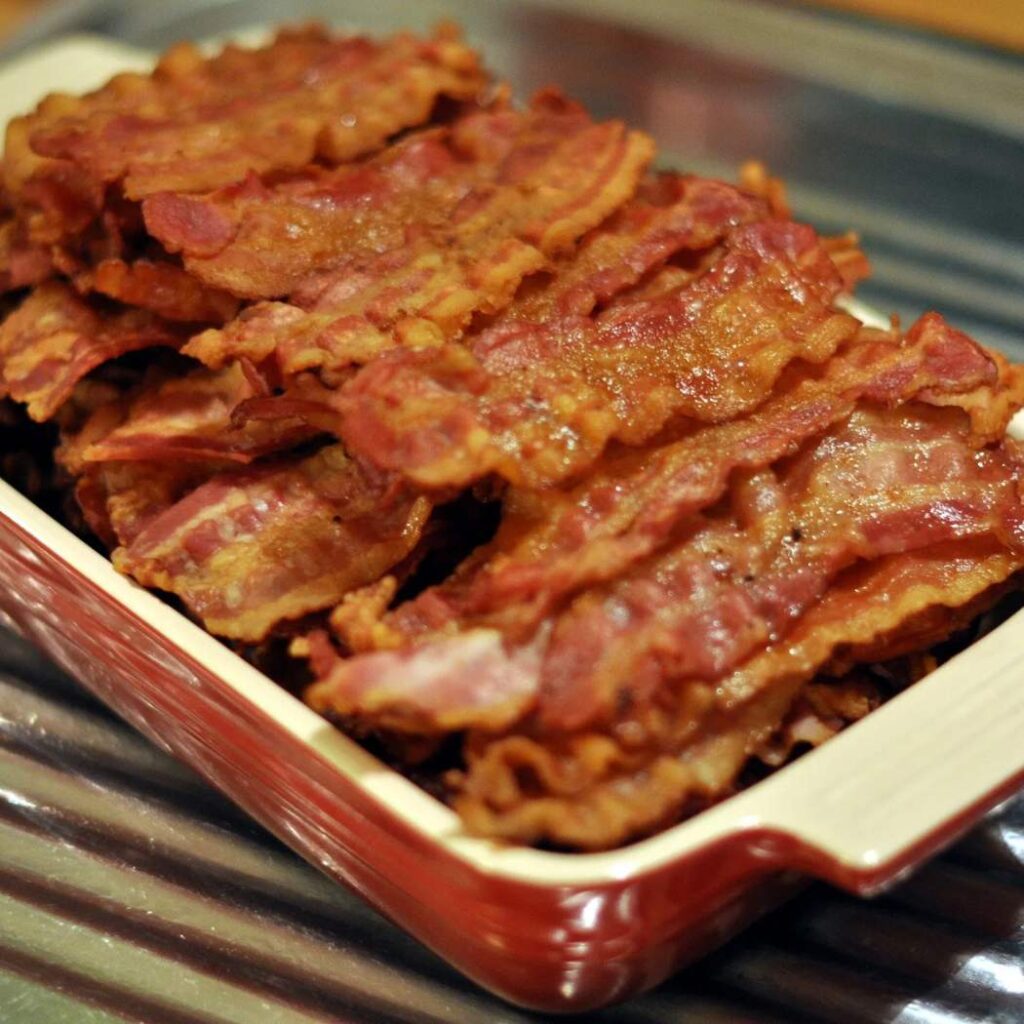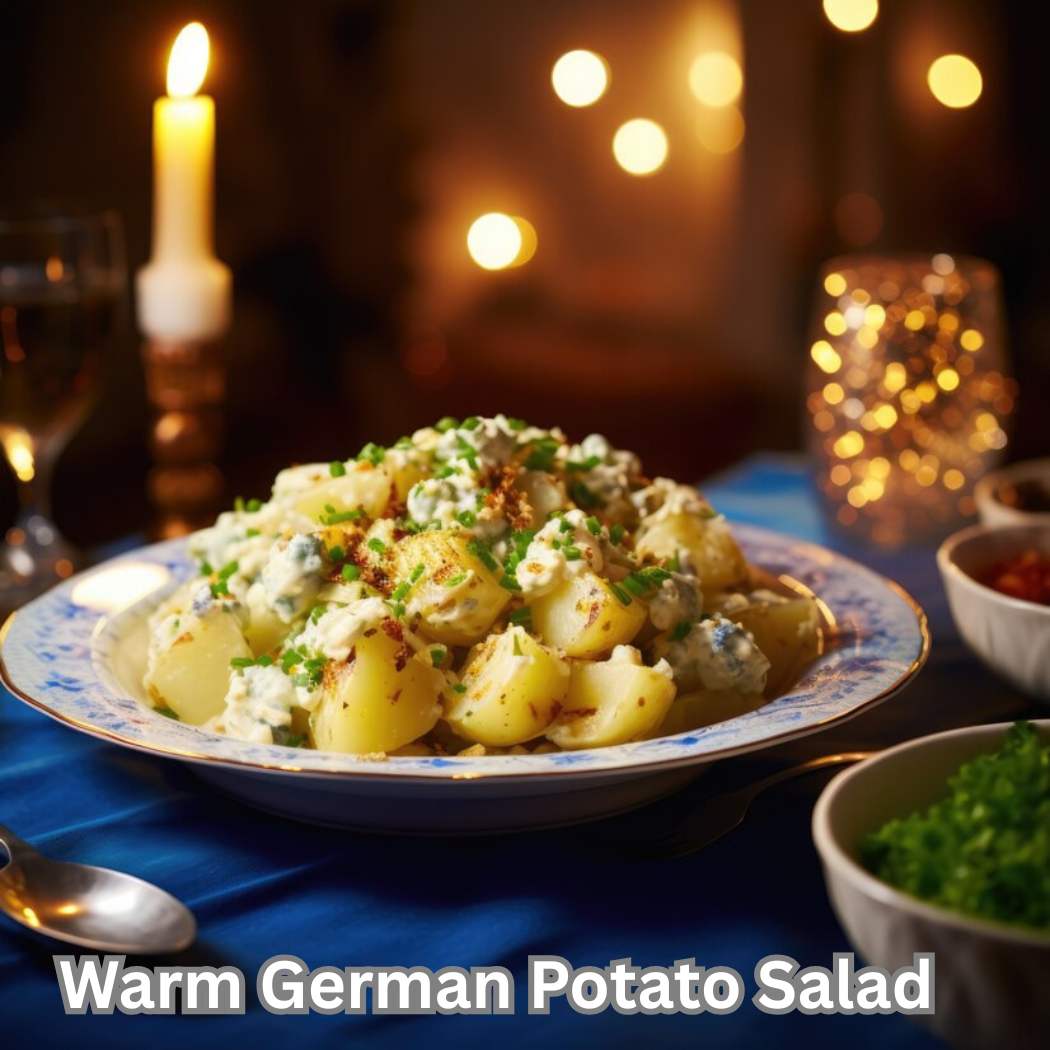It was October in Munich the first time I tried warm German potato salad, and let me tell ya—it wasn’t just the beer talking. The moment that tangy, smoky, slightly sweet forkful hit my mouth, something clicked. This wasn’t your backyard picnic’s mayo-smothered salad. No, this was something bold. Something alive. It tasted like it had a past. Like someone’s Oma had made it to soothe hearts after long days in the fields.
Warm German potato salad is not just food. It’s comfort disguised as a side dish. It’s vinegar and bacon whispering secrets to boiled potatoes. A dish that defies the usual cold-salad expectations and demands a spot on your table right beside schnitzel or roast bratwurst.
Let’s dive deep—real deep—into this traditional Bavarian staple. We’ll break it down ingredient by ingredient, technique by technique, and I’ll throw in all the stuff you don’t find in the usual recipes. And yeah, we’ll make sure it hits your taste buds just right.
What Is Warm German Potato Salad—and Why Is It So Dang Good?
This salad isn’t built around mayo or celery crunch. It’s warm. Tangy. Punchy with vinegar, rounded by a bit of sugar, and tied together by crispy bits of bacon and onions that have basically melted into joy.
Unlike its cold, creamy American cousin, warm German potato salad (aka Kartoffelsalat) is traditionally served hot or just slightly warm. It’s most famous in southern Germany, especially Bavaria. The beauty is in the balance: sharp apple cider vinegar, salty bacon, sweet undertones, and the earthy softness of waxy potatoes.
It’s bold, but it’s humble. Rustic yet refined.
Ingredients & Substitutions
Here’s what you’ll need, and a few pro tricks and swaps if you can’t find the good stuff.
- Waxy potatoes (like red potatoes or Yukon Golds)
→ These hold their shape and don’t go mushy. Don’t use Russets—they flake too much. - Thick-cut bacon (about 6 slices)
→ Smoked is best. If you’re going meatless, try smoked tempeh or sautéed mushrooms with smoked paprika. - Yellow onion (1 medium)
→ Red onion adds bite if you prefer a sharper edge. - Apple cider vinegar (1/4 cup)
→ White wine vinegar is okay, but you’ll lose a bit of the fruity depth. Balsamic? Nah, too sweet. - Sugar (1-2 tablespoons)
→ Just enough to mellow the acidity. Honey works too, but go easy. - Dijon mustard (1 tablespoon)
→ Adds a mellow, peppery backbone. Don’t skip it. - Salt & freshly ground black pepper
→ Be generous with the seasoning. Potatoes are greedy. - Fresh parsley (for garnish)
→ Optional, but adds a grassy, bright finish. - Optional: chicken or veggie stock (2-3 tablespoons)
→ A little splash deepens the dressing and makes the potatoes soak it up like a sponge.
Pro tip: Don’t peel the potatoes before boiling. Let them hold their shape and flavor. Peel after if you must, but the skins add texture and earthiness.
Step-by-Step Instructions
1. Boil the potatoes—but don’t overdo it
Scrub your potatoes clean and boil them whole in salted water. Don’t dice ‘em yet—boiling whole means less water absorption and more flavor retention.
→ Cook time: 15–20 mins depending on size. They should be fork-tender but not falling apart. Like, they still have a little dignity left.
Cool ‘em just enough to handle. Slice into thick-ish rounds or chunky bites.
2. Fry the bacon—don’t drain that fat!

Slice your bacon into small strips and fry it low and slow. You want crisp edges and that glorious rendered fat for the base of your dressing.
→ Expert move: Don’t drain the bacon grease. You’re not on a diet here. That’s liquid gold.
Scoop out the bacon bits and set aside, but leave the grease in the pan.
3. Cook the onions in the bacon fat
Add chopped onion to the same pan. Let them sizzle in that bacon-y goodness till they’re translucent, soft, and just starting to brown.
Don’t rush this. The slower they cook, the sweeter and more flavorful they get. It’s science… and magic.
4. Make the warm vinaigrette
Right into the onions, stir in:
- apple cider vinegar,
- sugar,
- Dijon mustard,
- a pinch of salt and pepper,
- optional splash of stock.
Simmer gently for 1–2 minutes to let everything marry. The vinegar should mellow, and the sugar should dissolve.
→ Smell that? That’s the moment the kitchen smells like your German great-aunt came back to life and forgave you for microwaving bratwurst.
5. Bring it all together
Gently toss the warm potatoes into the pan or a big mixing bowl. Pour the hot dressing right over. Add in the bacon. Stir gently but thoroughly. Let them sit for a few minutes to soak up every drop.
Garnish with chopped parsley if you’re feeling fancy or have in-laws coming over.
→ Optional variation: Add thinly sliced radishes for peppery crunch or a soft-boiled egg on top for richness.
Cooking Techniques & the Science Behind It

Here’s where the nerdy magic kicks in.
- Why waxy potatoes?
They’ve got low starch and high moisture, so they stay firm even after boiling. Perfect for salads. Russets go floury and fall apart. - Why warm dressing?
Warm potatoes = open pores. They act like sponges and absorb that flavorful fat-vinegar mix. Cold dressing just slides off like rain on a raincoat. - Why cook onions in bacon fat?
The fat captures and amplifies flavor. It’s a built-in seasoning agent. Plus, it makes the onions practically melt into the dressing. - Why use mustard?
Mustard acts as an emulsifier, helping the fat and vinegar stick together in a silky, clingy dressing. Plus, that little bite adds complexity. - Best tools
Use a cast iron or heavy-bottom skillet. It distributes heat better, so your onions caramelize evenly. And for potatoes, always use a wide pot—crowding means uneven cooking.
Serving & Pairing Suggestions
This salad is best served warm—never chilled. Room temp is okay, but warm brings out the richness.
Pair it with:
- Classic schnitzel (pork or chicken)
- Bratwurst or Weisswurst with sauerkraut
- Roast chicken with mustard glaze
- Beer-braised ribs
- Or go meatless: grilled portobello mushrooms or roasted root veg
Drink pairings
- A crisp German lager or Kölsch
- Riesling (dry, not sweet)
- Apple cider (hard or fresh)
Presentation tips
Use a rustic ceramic bowl. Let the colors shine—golden potatoes, flecks of bacon, glistening dressing, and fresh green herbs. A little cracked pepper on top makes it look like you tried really hard.
Conclusion
Warm German potato salad isn’t just a recipe. It’s a philosophy. It celebrates balance—fat and acid, sweet and savory. It demands respect for humble ingredients. And it’s proof that a “side dish” can steal the whole damn show.
It’s not about perfection. It’s about heart. The kind of dish you make when you want to say I love you without saying a word.
Final tip? Always make more than you think you need. This stuff disappears. Fast.
FAQs
Can I make warm German potato salad ahead of time?
Yes, but it’s best served fresh. If you must prep ahead, store the potatoes and dressing separately, then reheat gently and toss before serving.
What if I don’t eat pork?
Try smoked turkey bacon or caramelized mushrooms with smoked paprika. You won’t get the same depth, but it’s still delicious.
Can I use vinegar other than apple cider?
Sure. White wine vinegar is a clean sub. Sherry vinegar adds complexity. Avoid balsamic—it’s too overpowering and sweet.
Do I have to peel the potatoes?
Nope. The skins add texture and a rustic look. Just make sure they’re scrubbed clean.
Is this gluten-free?
Yes—just check your mustard and bacon to ensure no gluten-containing additives are hiding in there.
Need help adapting it for a crowd? Curious about regional German twists? Just holler. This dish has roots deep enough to carry a thousand variations—and stories.
Would you like a printable version or diagram of the cooking steps?








